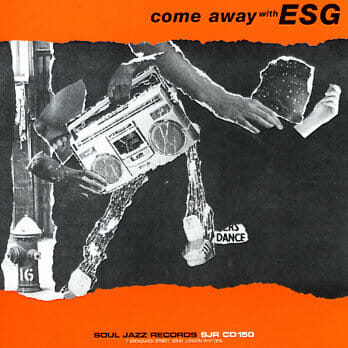
Dance With Somebody: Infectious, influential no wave luminaries re-emerge
As befits a genre defined by negation, No Wave barely existed; the term was shorthand—likely derived from “New Wave” and the title of the movement’s seminal document, the Brian Eno-produced compilation No New York—for a motley crew of antagonistic late-70s NYC-based bands who turned the tables on punk, making its reliance on hoary blues-based rock sound quaint. No Wave was only about what it was against, which was everything.
No Wave bands did have some common tendencies: ugly lyrics, confrontational performances, untrained playing, primitive rhythms, punishing dissonance. But in practice, they could sound like pretty much anything elemental and unorthodox, from the searingly tribal minimalism of Teenage Jesus and The Jerks to the punk-funk of James Chance and the Contortions to the panicky surrealism of Mars. No Wave’s brightest lights had housefly lifespans, and recorded little or not at all; despite all this, the movement made a direct impression on decades (and counting) of noise and experimental music, and an indirect one on everything from rap to post-punk to dance.
Like punk, No Wave arguably died when it was named (you can’t codify chaos, and all that) and its prime movers and shakers scattered to all corners of experimental art. But from its ashes rose a crop of bands that retained its rhythmic focus, immediacy and openness to non-rock genres while jettisoning rhetorical and sonic nihilism. The work of Chance proved to have been prescient when post-No Wave bands embraced dance music, including Konk, the Bush Tetras, Liquid Liquid, and most notably the great ESG, whose 1983 sophomore album has been reissued.
ESG’s name is less known than it should be, but its influence runs deep—which is likely why Come Away with ESG sounds so shockingly current. The band revolved around the Bronx’s Scroggins sisters (Marie played congas and sang, Renee sang and Valerie drummed) with friends David Miles and Leroy Glover joining them on guitar and bass.
Short for Emerald, Sapphire and Gold, the name reflected the rarity and preciousness of their style; similar to the spacey, hypnotic sound of dub reggae, this is dub disco with a punk edge. Whether dark and moody or bright and bubbly, the songs are always pared down to the most kinetic essentials. Jittery cymbals and colorful congas lock into minimal polyrhythms, as deep bass grooves and sleek, cooing vocals provide infectious melodies.
The repetitive exhortations to dance and feel good are pure disco-diva hedonism, but placed in a context favoring simplicity over opulence, they become schoolyard chants. “Come away with me, oh yeah! / We’ll have a good time,” the sisters sing on the clattering title track, and you totally believe it. Resting on a bedrock of taut, stark rhythms and echoing vocal embellishments, each track is distinct: The guitar part of “Chistelle” is like shadowy surf-rock, and the eerily twisting synth melody of “About You” predicts (years in advance) the West Coast gangsta rap known as G-funk.
The band broke up soon after Come Away with ESG, but went on to become heavily sampled in hip-hop (as befits their Bronx pedigree) by icons such as Wu-Tang Clan, Beastie Boys, J-Dilla and Gang Starr. They were a huge inspiration for the dance-punk craze of the last decade, especially !!!, and their influence is writ large in the music of LCD Soundsystem’s James Murphy, himself one of the most influential figures in modern independent music. In retrospect, it can be hard to connect the bleakness of an act like Mars to the friendliness of ESG—the lineage is more spiritual than sonic—but both bands were crucial in an ongoing process, which would accelerate rapidly with the rise of the Internet, wherein popular music realized it didn’t have to be one thing. It could be everything, or nothing. Thankfully, following ESG’s example, it chose everything.